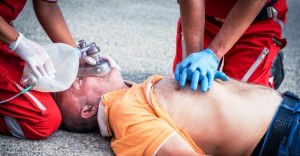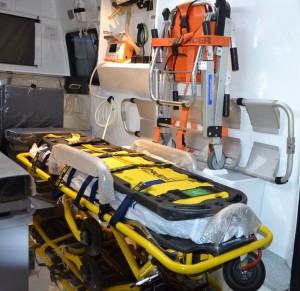
Emergency Services in India, the new NABH Standards will improve safety and treatments
Emergency Services in India, the new NABH Standards will improve safety and treatments
 In June, 2016 India launched the National Certification for Accreditation of Emergency Departments throughout the country. It is the first time that India try to realize a National EMS service, tracing a map about the pre-hospital emergency service in its territory. Every Department in India will be accredited for operate in fully cooperation among them. Now, the project – launched in collaboration with the NABH (National Accreditation Board for Hospitals & Healthcare Providers) – achieves the public status and opens its doors to all the Indian hospitals and providers. The operators, which are working to organize a pre-hospital service must define its scope of service provisions, and provides to patients information about the services available. This plan will provide throughout the Country the bases that a national pre-hospital organization has needed for so long.
In June, 2016 India launched the National Certification for Accreditation of Emergency Departments throughout the country. It is the first time that India try to realize a National EMS service, tracing a map about the pre-hospital emergency service in its territory. Every Department in India will be accredited for operate in fully cooperation among them. Now, the project – launched in collaboration with the NABH (National Accreditation Board for Hospitals & Healthcare Providers) – achieves the public status and opens its doors to all the Indian hospitals and providers. The operators, which are working to organize a pre-hospital service must define its scope of service provisions, and provides to patients information about the services available. This plan will provide throughout the Country the bases that a national pre-hospital organization has needed for so long.
The new standards will facilitate matching patients with the organization’s resources properly. Once the patient is in the organization, the patient is registered and assessed, whether in OPD, IPD or Emergency. The laboratory and imaging services are provided by competent staff in a safe environment for both patients and staff. A standardized approach is used for referring or transferring patients in case the services they need do not match with the available services at the organization. Further, the chapter lays down key safety and process elements that the organization should meet, in the continuum of the patient care within the hospital and till discharge. This also means that India will be able to provide – in the future – a cooperative helicopter EMS service. Indeed, until now, only a private operator was on stage in the HEMS service in the county.
Every Department in India should be accredited using the application form on the NABH website
INTRODUCTION FROM THE NABH STANDARS OF EMERGENCY MEDICAL SERVICES CERTIFICATION PROGRAM
 1 – Patients in the Emergency Department are provided urgent care in consonance with their clinical requirements and in accordance to the statutes of the land. Policies and procedures guide the activities of the emergency department including the ambulance services. Standard protocols are uniformly followed for cardio-pulmonary resuscitation and provision of resources and trained manpower is available for satisfactory resuscitation efforts. There are also policies and procedures to guide the nursing practices for the patients in the emergency departments. Patients may need to undergo surgical or other clinical procedures in the emergency department and there are safeguards in place to prevent any adverse events. Situations needing special attention such as sedation, restraints, end of life care and pain management and recognized and attended according to laid down policy and procedure.
1 – Patients in the Emergency Department are provided urgent care in consonance with their clinical requirements and in accordance to the statutes of the land. Policies and procedures guide the activities of the emergency department including the ambulance services. Standard protocols are uniformly followed for cardio-pulmonary resuscitation and provision of resources and trained manpower is available for satisfactory resuscitation efforts. There are also policies and procedures to guide the nursing practices for the patients in the emergency departments. Patients may need to undergo surgical or other clinical procedures in the emergency department and there are safeguards in place to prevent any adverse events. Situations needing special attention such as sedation, restraints, end of life care and pain management and recognized and attended according to laid down policy and procedure.
2 – The rights and responsibilities of the patient and family are outlined. The staff is aware of these and has been trained to protect patient rights. Patients are informed of their rights and educated about their responsibilities at the time of admission. The costs are explained in a clear manner to patient and/or family. A documented process for obtaining patient and/or families approval exists for informed decision making about their care. Patients and families have the right to be informed and educated about their healthcare needs in a language and manner that is understandable by them.
 3 – The Emergency Department has a safe and organized medication process. The process includes policies and procedures that guide availability, safe storage, prescription, dispensing and administration of medications. The availability of emergency medications is stressed upon. The organization should have a mechanism to ensure the standardization of emergency medications, readily available and replenished in a timely manner. There should be a monitoring mechanism to ensure that the required medications are always stocked and well conserved within expiry dates. The process also includes monitoring of patients after administration and procedures for reporting and analyzing adverse drug events, which include errors and events.
3 – The Emergency Department has a safe and organized medication process. The process includes policies and procedures that guide availability, safe storage, prescription, dispensing and administration of medications. The availability of emergency medications is stressed upon. The organization should have a mechanism to ensure the standardization of emergency medications, readily available and replenished in a timely manner. There should be a monitoring mechanism to ensure that the required medications are always stocked and well conserved within expiry dates. The process also includes monitoring of patients after administration and procedures for reporting and analyzing adverse drug events, which include errors and events.
4 – The standards guide the provision of an effective infection control program in the Emergency department. The program is documented and aims the reduction/elimination of infection risks for patients, visitors and providers of care. The organization proactively monitors adherence to infection control practices such as standard precautions, cleaning disinfection and sterilization. Adequate facilities for the protection of staff are available. Bio Medical Waste is managed as per policies and procedures and in accordance to legal require.
 5 – The standards encourage an environment of continual quality improvement. The quality and safety program should be documented and should involve all aspects of the functioning in the Emergency department. Processes should be in place to ensure the patient safety. The Emergency department should collect data on key performance indicators as part of its quality improvement program. The collected data should be collated, analyzed and used for further improvements. The improvements should be sustained. The organization should define its sentinel events and intensively investigate when such events occur. The quality program should be supported by the management.
5 – The standards encourage an environment of continual quality improvement. The quality and safety program should be documented and should involve all aspects of the functioning in the Emergency department. Processes should be in place to ensure the patient safety. The Emergency department should collect data on key performance indicators as part of its quality improvement program. The collected data should be collated, analyzed and used for further improvements. The improvements should be sustained. The organization should define its sentinel events and intensively investigate when such events occur. The quality program should be supported by the management.
6 – The most important resource of an Emergency department is the human resource. Human resources are an asset for effective and efficient functioning of an emergency department. Without an equally effective human resource management system, all other inputs like technology, infrastructure and finances come to naught. Human resource management is concerned with the “people” dimension in management. The goal of human resource management is to acquire, provide, retain and maintain competent people in right numbers to meet the needs of the patients and community served by the organization. This is based on the organization’s mission, objectives, goals and scope of services. Effective human resource management involves the following processes and activities:
– (a) Acquisition of Human Resources, which involves human resource planning, recruiting and socialization of the new employees.
– (b) Training and development relates to the performance in the present and future anticipated jobs. The employees are provided with opportunities to advance personally as well as professionally.
(c) Motivation relates to job design, performance appraisal and discipline.
(d) Maintenance relates to safety and health of the employees.


